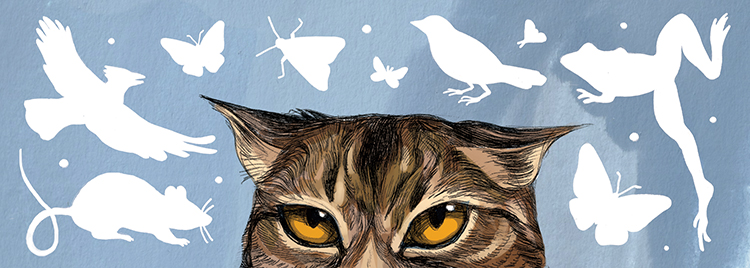 Story by Bernard Brown
Story by Bernard Brown
WEST PHILADELPHIA will never be the Everglades. It will never be the Pine Barrens, or even the John Heinz National Wildlife Refuge. As much as the naturalist in me would like to see more greenery and less asphalt, more snakes and fewer cars, I accept that I live in a densely populated city neighborhood.
Nonetheless, I support making wherever we live as hospitable to wildlife as possible. I won’t ever see mountain lions stalk elk on Spruce Street, but maybe I can spot songbirds that have avoided fatal window collisions, and find more than just pollution-tolerant worms and exotic carp in our streams and rivers.
So, I perked up this past spring when the Philadelphia Water Department (PWD) signed Green City, Clean Waters—a landmark deal with the EPA to better manage stormwater. Most of my enviro-geek friends were enthralled by the plan’s innovative projects: green roofs, rain gardens, porous pavement that soaks up water… I was excited by what it means for salamanders.
I thought of the yellow two-lined salamander I caught on a snowy, January morning in a tiny Fairmount Park stream. I had ridden my bike there in the 25-degree weather out of stir-crazy desperation—the only critters found in the dead of winter are the ones living in running water. The persistence of life, wriggling through the darkest, coldest time of the year continues to inspire me.
Much of Green City, Clean Waters is aimed at reducing the amount of rainwater that runs off Philadelphia’s impermeable surfaces (concrete, asphalt, tar rooftops, etc.). This water pours into our sewer system (as well as several streams routed underground), often overwhelming it and forcing raw sewage into our rivers.
Rain coursing off the hard urban landscape also damages our smaller waterways. Storms produce little flash floods that tear up streambeds. That water carries pollution from the pavement and wreaks havoc on water temperatures and oxygen levels—water holds less oxygen as it warms, so rain washing off hot asphalt can choke aquatic critters.
In warmer weather, I’ve found two-lined salamanders in the Wissahickon Valley, cohabiting with their more elegant cousins, long-tailed salamanders. These orange and black-polka-dotted creatures disappear for the winter to breed. They follow the water to lay their eggs in the underground springs that give birth to streams.
A healthy streambed in the Mid-Atlantic piedmont could host four salamander species under its rocks and dead leaves. But that diversity declines as a watershed becomes less permeable: more pavement means fewer salamander species. In our region the first to die are the long-tailed; the last ones to go are the two-lined.
Other stream critters follow similar patterns, and researchers use the diversity of aquatic macroinvertebrates (bugs) to gauge the health of streams. If all you find are hardy leeches and black fly larvae in a stream, you know there’s a lot of pollution. And, if you catch sensitive species, such as planarians, stonefly larvae and riffle beetles, you know the water is clean.
It’s on behalf of critters like these that I cheer for Green City, Clean Waters. I know the Philadelphia Water Department didn’t have the salamanders in mind when they created the plan—nor the stoneflies and planarians. But, as a naturalist, I’ll welcome anything that keeps Philadelphia at least a little wild.
Bernard Brown is an amateur field herper, bureaucrat and founder of the PB&J Campaign (pbjcampaign.org), a movement focused on the benefits of eating lower on the food chain.




